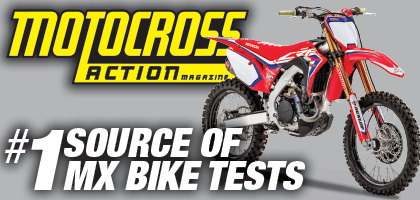Collarbone Fractures and Chest Protectors
ÿ
A chest protector is one of the most critical pieces of protective gear a rider can wear. One of the most common injuries that occurs to the chest area is a clavicle (a.k.a collarbone) fracture, which when protected properly, a rider can easily avoid. This week we will talk about clavicle fractures and protecting yourself from that injury with a chest protector.
Clavicle Fractures
Clavicle fractures involve approximately 5% of all fractures seen in hospital emergency admissions. It is most commonly fractured in the middle of the bone, about 80% of reported cases, because that is the weakest part of the bone. 10% of all fractured bones in adults are the clavicle, but children are particularly prone to this sort of injury.
This sort of break can happen in 3 main ways: falling onto the shoulder (about 85% are from this sort of injury), a direct blow to the shoulder, or from falling onto an outstretched arm. Any motocrosser can tell you that these are 3 common ways to fall. A rider’s first reaction is to break their fall with an outstretched arm. This transfers all of that energy straight to your collarbone, creating the all too common collarbone fracture or break. A direct impact to the collarbone, often times from the lower edge of your helmet, can easily lead to a fracture or clean break.
These fractures are fairly easy to recognize. If a rider is suffering from a fall onto their shoulder, a direct hit to their shoulder or a fall onto an outstretched arm, pain related to upper arm/shoulder movement, swelling, bruising, feeling of fracture through the skin and/or a sharp pain when movement in that direct area is made, they should place ice on the area immediately and seek a doctors attention. At the doctor’s office, they will receive an x-ray to get an accurate diagnosis.
Treating clavicle fractures usually does not require surgery. A couple reasons your doctor may perform surgery are if the bone is protruding through the skin, if the bone is pressing on a nerve of blood vessel or if the break is in an area that generally doesn’t heal of if it is having trouble healing. In this case, a plate will be affixed along the bone on either side of the fracture and screwed into the clavicle.
The most common treatment is using a sling or a brace to stabilize the bone. The most common brace is the Figure-8 Brace. It is designed to provide immobilization of the fracture to aid in and increase the level of healing. Some doctors will choose to use just a simple sling, as the findings on healing of clavicle fractures doesn’t warrant the need for the Figure-8. Pain medications and anti-inflammatory medications are also prescribed to keep the pain at a minimal level and keep the swelling down.
For either treatment type, healing time is about four to six weeks. It takes about two to three months for the clavicle to begin to get back to normal strength and will regain its full strength after about 6 months. Physical therapy is used to help the shoulder and arm regain full range of motion and strength.
Chest Protectors
Every rider has crashed at some point and it is inevitable that it will happen again. One of the most important pieces of protection available is a chest protector. A conventional, over-the-jersey chest protector offers all-around comfortable protection from a variety of situations. They are effective, comfortable and well ventilated to keep you cool. The primary function of a chest protector is to block roost and protect from impact. Incorporated shoulder panels will help to absorb impact and greatly reduce the likeliness of a shoulder or collarbone injury.
Another common type of chest protector which has grown in popularity is the under-the-jersey chest protector. These units are made of softer foam that contours to the body and often times feature impact panels to help guard from roost and rocks. While their primary fuction is to protect from roost, some will even feature molded shoulder impact cups to add value in a crash situation.
Most chest protectors on the market are contoured towards body shape, making them extremely comfortable. So when you begin to look, don’t think that serious protection and coverage means you can’t be comfortable. They also allow your body to follow the movements of your specific riding style, which means while you ride you can be confident in your performance and your safety.
Chest protectors not only keep you from clavicle damage, but also from chest, shoulder and arm, rib, and internal organ injuries. One piece of protective gear and so many reasons to wear it!
“EVS ? Winning with Safety”





Comments are closed.